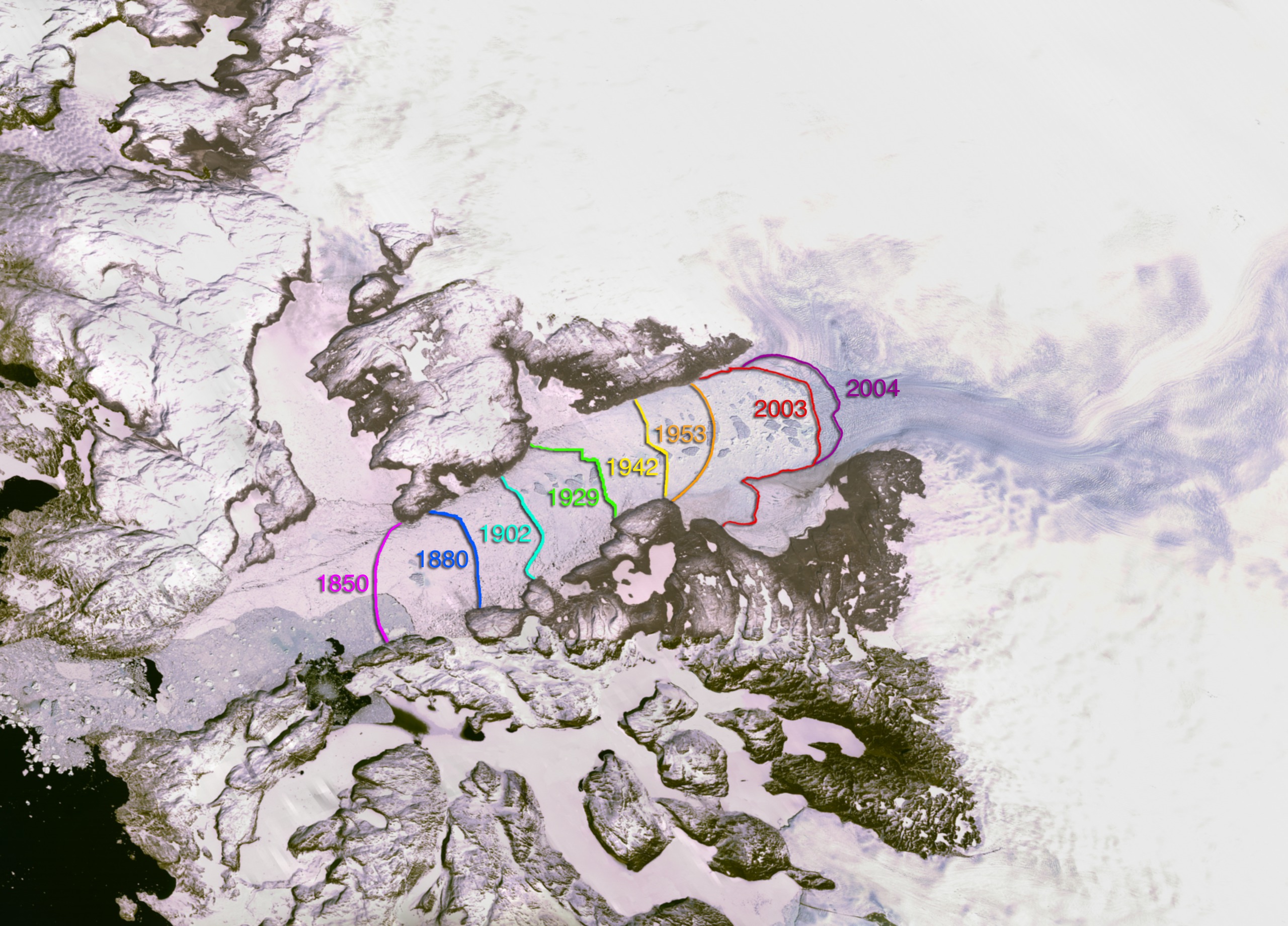Earth
ID: 3077
Since measurements of Jakobshavn Isbrae were first taken in 1850, the glacier has gradually receded, finally coming to rest at a certain point for the past 5 decades. However, from 1997 to 2003, the glacier has begun to recede again, this time almost doubling in speed. The finding is important for many reasons. For starters, as more ice moves from glaciers on land into the ocean, it raises sea levels. Jakobshavn Isbrae is Greenland's largest outlet glacier, draining 6.5 percent of Greenland's ice sheet area. The ice stream's speed-up and near-doubling of ice flow from land into the ocean has increased the rate of sea level rise by about .06 millimeters (about .002 inches) per year, or roughly 4 percent of the 20th century rate of sea level increase. This version has been updated to include the 2004 calving front as derived from Terra/ASTER data.

Updated History of Jakobshavn Glacier Recession (1850-2004)

Visualization Credits
Alex Kekesi (Global Science and Technology, Inc.): Lead Animator
Fred Kemman (HTSI): Animator
Waleed Abdalati (NASA/HQ): Scientist
Fred Kemman (HTSI): Animator
Waleed Abdalati (NASA/HQ): Scientist
Please give credit for this item to:
NASA/Goddard Space Flight Center - Scientific Visualization Studio, and Goddard TV
NASA/Goddard Space Flight Center - Scientific Visualization Studio, and Goddard TV
Short URL to share this page:
https://svs.gsfc.nasa.gov/3077
Missions:
Landsat
Terra
Data Used:
Note: While we identify the data sets used in these visualizations, we do not store any further details nor the data sets themselves on our site.
Dates of Data Used:
1850, 1880, 1902, 1929, 1942, 1953, 2003, 2004
Keyword:
NASA Science >> Earth
https://svs.gsfc.nasa.gov/3077
Missions:
Landsat
Terra
Data Used:
Landsat-7/ETM+/Band Combination 3-2-1
Dates of Data Used:
1850, 1880, 1902, 1929, 1942, 1953, 2003, 2004
Keyword:
NASA Science >> Earth











